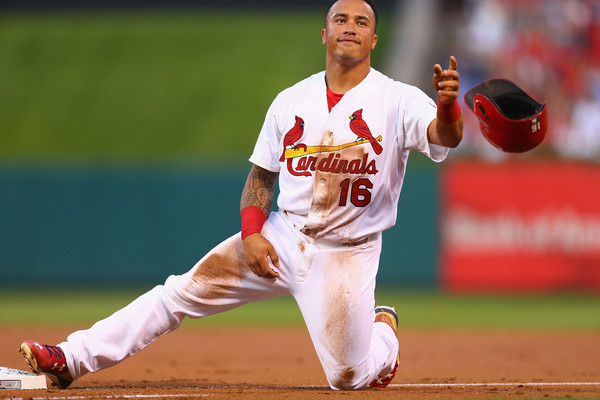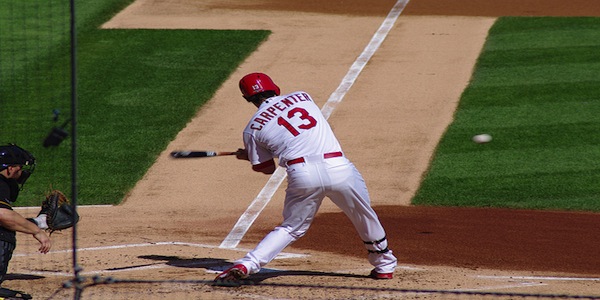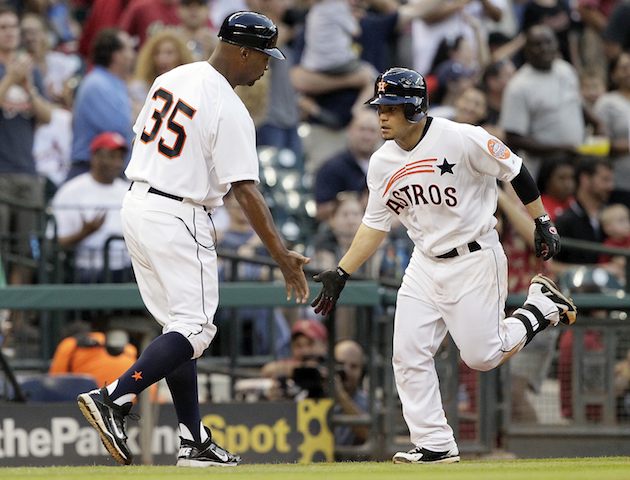Second Basemen and Shortstops: Like Him Less, Like Him More

I’ll start by addressing the elephant in the room. I did not discuss the sizable gap in ECR and my rank of Manny Machado. It appears some experts aren’t ranking Machado at shortstop, and that’s the reason for the ECR of seventh at shortstop. Moving on, a pair of Cardinals find themselves in opposite sections in this article. Ditto for a pair of shortstop eligible players who will enjoy a change of scenery that involves a move to the American League East.
Like Him Less
Kolten Wong – ECR: 2B – 10 , My Rank: 2B – 22
It’s understandable why the expert consensus rank (ECR) paints the picture of a starter at second base in standard leagues. The left-handed hitting second baseman hit 11 homers with 15 stolen bases last season. The combo of power and speed plays well at a position lacking on offense. The home run output last year was lower than in 2014 (12 homers) in 180 more plate appearances, and his stolen base output (20 in 2014) dropped, too. Wong’s far from the first player to go through something of a sophomore slump, and it’s not as if his total line was bad. However, it’s his stolen base efficiency drop that immediately stands out as alarming.
Wong stole 20 bases in 24 attempts (83.3%) in 2014 and stole just 15 in 23 attempts (65.2%) last season. He needs to turn his success rate around or run the risk of receiving the red light. The Cardinals totaled just 107 stolen base attempts last year (league average was 119 last season, per Baseball-Reference), so it’s not as if Mike Matheny has aggressive base stealing tendencies. In 2014, the Cardinals attempted 89 stolen bases compared to a league average of 127 attempts. In fact, in all four years Matheny has managed, the Cardinals have ranked as one of the least aggressive teams on the bases. Don’t be so quick to pencil in Wong for at least a repeat of last season’s stolen base output.
As for Wong’s homers, there’s bad news in his fly ball info, too. For starters, his fly-rate dropped slightly from 33.7% in 2014 to 32.8% in 2015. That’s not a big deal, but it’s not ideal for hitting long balls. Worse yet, his average home run and fly ball distance dropped from 276.78 feet (good for 162nd out of 298 hitters) in 2014 to 269.36 feet (226th out of 284 hitters) in 2015, per Baseball Heat Maps. It’s probably best to project a repeat of last year’s 11 homers rather than projecting power growth even though he’s entering what should be his power peak.
The second baseman was awful against lefties last year (3.4% walk rate, 19.7% strikeout rate, .229 batting average, .275 OBP, one homer and 52 wRC+). His contact against them was quite weak with just a 15.9% hard-hit ball rate. There was chatter of Wong hitting leadoff so that the club could drop Matt Carpenter to a run producing spot in the order early in camp, but Wong’s scuffling in spring training games. The young second baseman is also coming off of a terrible finish to last year. In the first half of 2015, he tallied a .280/.343/.434 triple-slash line with nine homers and 10 stolen bases. In the second half, his numbers crumbled to a .238/.292/.322 triple-slash line with two homers and five stolen bases. Wong isn’t without upside, but the other experts appear to be ignoring his ample downside.
Starlin Castro – ECR: SS – 12, My Rank: SS – 19
Starlin Castro is a tough player to peg in rankings, and a change of scenery could be just what he needs to produce at a high level consistently. On the positive side of the ledger, Castro has hit 10 or more homers in five straight years and hit north of .280 in four of six seasons in the majors. On the negative side of the ledger, he’s hit .265 or lower in two of the last three years and has stolen just nine bases in the last two years combined. His already aggressive approach was kicked up to a new level last year with Castro turning in a career-low 3.6% walk rate in 578 plate appearances.
Most folks probably assume he’s upgrading home ballparks. Well, that’s not really the case. Wrigley Field has right-handed batter park factors of 128 for homers and 103 for runs using a three-year rolling average, according to StatCorner, and Yankee Stadium’s park factors are 122 for homers and 96 for runs. The soon-to-be-26-year-old Castro posted his lowest line drive rate of his career (17.0%) in 2015 and his lowest hard-hit ball rate (23.6%) since 2011. He’s only a year removed from ripping 14 homers with a .292 batting average, and his stats have bounced up and down throughout his career. His inconsistencies and poor play in 2015 makes him a tough sell as a starter in standard leagues. There is upside worth investing in at the right price, however, and he totaled a nifty .295/.319/.464 triple-slash line with six homers in 217 plate appearances in the second half last year. The combo of good and bad makes him a fine target as a middle infielder or backup shortstop with some upside, and my ranking reflects that.
Like Him More
Matt Carpenter – ECR: 2B – 9, My Rank: 2B – 3
Am I buying a repeat of Matt Carpenter’s 28 homers? Nope, but he is a different hitter than he was prior to 2015. Carpenter swapped some contact (15.5% strikeout rate prior to 2015 and 22.7% strikeout rate in 2015) for power while also increasing his fly-ball rate from 35.0% before last year to 41.7% in 2015. He rattled off a career-high 36.8% hard-hit ball rate, continued to smoke liners (his 28.5% line drive rate was a career-high mark) and avoid popups (2.3% infield fly-ball rate). He was also more pull conscious setting a new high with a 39.3% pull rate, per FanGraphs, and bumped his average home run and fly ball rate up from 270.02 feet in 2014 to 283.92 feet last season. He’s clearly made changes to reach the seats more, and while I think an upper-teens to low-20s homer total is far more likely than reaching the upper-20s again, that plays well with the rest of his skill-set.
The rest of that skill-set involves a heavy dose of line drives and an aversion to free outs by popup, which should keep his batting average north of .270 even if his strikeout rate remains north of 22%. His patience is reflected by a 12.2% walk rate last year and 11.7% for his career, and it will make him an on-base stud (.365 OBP in 2015 and .375 OBP for his career). If he continues to hit leadoff, he should score around 100 runs (he’s averaged 100 over the last two years and scored 126 in 2013). If, however, he’s dropped in the order, he could trade some runs for RBI. one way or the other, he’ll be a hearty source of run production, power and average at a position lacking offensive talent. That’s the profile of a top-five option at the keystone position.
Brad Miller – ECR: SS – 23, My Rank: SS – 13
Castro’s change of scenery is getting more virtual and literal ink this offseason, but Brad Miller’s move actually provides him a better hitting environment. Safeco Field has left-handed batter park factors of 89 for doubles/triples, 104 for homers and 87 for runs. He upgrades all of those factors with Tropicana Field featuring park factors for lefties of 92 for doubles/triples, 119 for homers and 109 for runs. Those are monstrous home park factor upgrades for homers and runs.
Also, while Castro’s production has bounced up and down, Miller’s is trending in the right direction. Last season, he set new highs in games played (123), plate appearances (497), homers (11), stolen bases (13), walk rate (9.5%) and OBP (.329). He even managed to whittle his strikeout rate down from 23.1% in 2014 to 20.3% while bumping up his walk rate 1.2%. His 11.2% SwStr% (9.9% league average last year, according to FanGraphs) is a bit concerning, but it’s easy to see how he cut down on his punch outs. After turning in a nearly league average 66.0% Z-Swing% (65.7% league average in 2014), he was more aggressive in the strike zone with a 71.1% Z-Swing% (66.9% league average in 2015). He also posted the lowest O-Swing% (30.4%) of his career and chased less than the league average (31.3%) for the first time in his career. Miller’s selective aggressiveness is a positive change, and if he can cut back on his SwStr% closer to his pre-2015 rate (9.2%), he could bump his batting average north of .260 as it was in his rookie season (.265).
Miller’s power is trending in the right direction, too. His average home run and fly ball distance has improved from 275.93 feet in 2013 to 279.28 feet in 2014 and 282.94 feet last season. Pair the increasing distance on his fly balls with his new home park’s more advantageous park factors for homers, and a home run total in the teens is well within reach. He should also once again reach double-digit stolen bases. Miller has totaled double-digit steals in all but one of his full professional seasons dating back to his full-season professional debut in 2012. Moreover, he will be playing for a manager who allows his base runners to steal more often. Last season, the Mariners attempted 114 stolen bases and the Rays 132 steals. Miller is awful against lefties (two homers, .226 batting average and 62 wRC+ in 335 plate appearances in his career), and he’ll likely cede playing time to Tim Beckham when the Rays face a southpaw. That said, the total package from Miller is on the cusp of being starting shortstop worthy in mixed leagues and looks like a clearly better option than Castro, yet the ECR would suggest otherwise.




